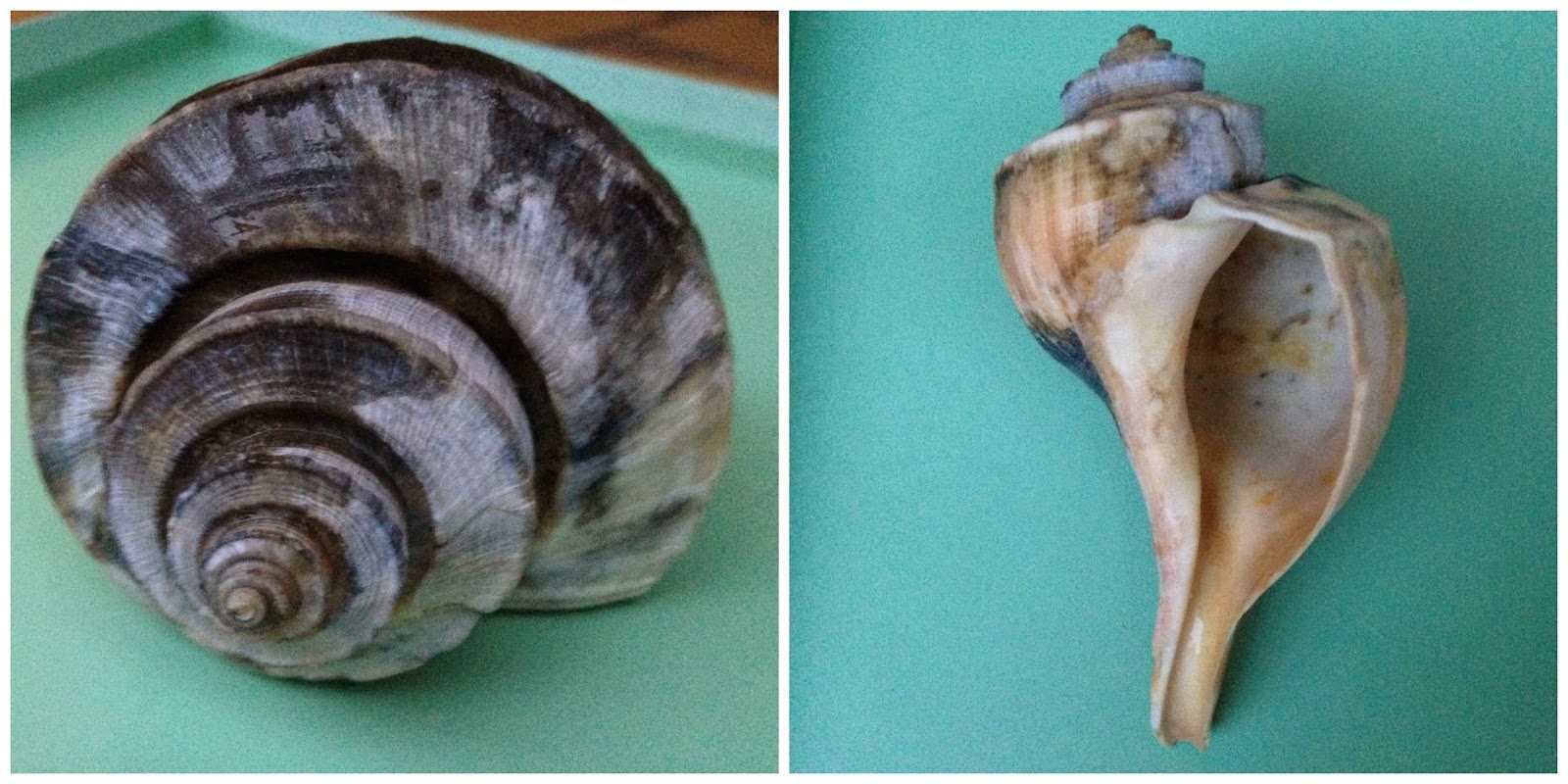Last spring I thought of the brilliant idea to "decorate" my garden by lining the outside of it with conchs. Not that brilliant when you start thinking about what kind of animals will build their homes in them. After all, that is exactly what a conch is, a home produced and inhabited by the aquatic animal living inside it. That is until for whatever reason it leaves or dies and the lovely empty home washes on shore.
I finally did the deed of removing them from the garden, and rinsing them all off. I let them sit out for a while thinking that it may take more time for all the new critters to leave. And, then it iced and snowed. On my conchs. Which actually ended up being great because I got this fantastic picture of my babies in the snow. (Conch's are resilient amazing shells, and a storm like this is nothing to them).
 |
| Winter Whelk Wonderland |
I will not put my beautiful whelks in the ground ever again. Promise.
Maybe because of this small task, I was inspired in the freezing cold to check out the beach the past couple of days. Low and behold, more whelks were waiting for me on the beach.
 |
| Kiener Whelk |
 |
| Kiener Whelks |
 |
| Kiener Whelk |
 |
| Kiener Whelk |
I love these whelks. I love how heavy and structured their spines are. Initially, and I suppose all my life up until now, I thought they were all Knobbed Whelks. But after some research, I have come to the conclusion that these are in fact Kiener Whelks. But,
very similar to the Knobbed Whelk. I have been going through all my whelks trying to figure out the difference since, and it's not easy. I searched Google trying to find a definitive difference between the two, and all I could find was that the lower part of the body whorl is thicker on the Kiener Whelk than on the Knobbed Whelk. Well, most of my whelks body whorls are a little chipped there, so not the best indicator. As I studied my whelk collection, it became obvious that across the board, the Kiener Whelk is a much heavier shell, and the spines are thick and highly structured. The spines on the Knobbed Whelk are smaller and more worn. Even though it may not be easy to figure out if your whelk is a Kiener or a Knobbed, it sure is fun to try.
With that said, I thought I would post a handful of pictures of the different types of whelks I have on hand, so you may also get to know the differences.
The biggest difference in all the whelks occurs with the Lightning Whelk. Lightning Whelks are the only whelk whose aperture is on the left. How cool is that?!
 |
| Lightning Whelk |
|
 |
| Knobbed Whelk |
|
 |
| Kiener Whelk |
 |
| Channeled Whelk |
 |
| Pear Whelk |
That was enough schooling for me today. Happy hunting out there, and stay warm!
Cheers,
Margaret































